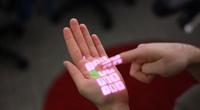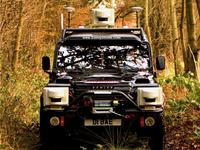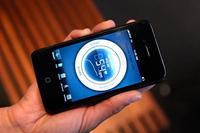-
Researchers fire 1,000th shot on laboratory railgun
Scientists reached a milestone in the Electromagnetic Railgun program when they fired a laboratory-scale system for the 1,000th time on 31 October, the raygun is a long-range weapon that launches projectiles using electricity instead of chemical propellants
-
-
Gecko-inspired tank robot has many applications
Researchers have developed a tank-like robot that has the ability to scale smooth walls, making it suitable for a range of applications such as inspecting pipes, buildings, aircraft, and nuclear power plants, and also for search and rescue operations
-
-
Competition for reassembling shredded documents

Today’s troops often confiscate the remnants of destroyed documents in war zones, but reconstructing these documents is a daunting task; DARPA, the Pentagon’s research arm, is conducting a competition to find the best technology for reassembling shredded documents
-
-
Printing a building -- additive manufacturing research moves into construction
Additive manufacturing — commonly known as 3-D printing — has been used for a surprisingly large range of products and projects, while the devices themselves have continually declined in cost and size; now the technology turns its attention to concrete and building
-
-
Electronic cotton: smart cloths made from conductive cotton fiber
The latest breakthrough in cotton fiber research may soon make possible hospital gowns that monitor medical patients and jerseys that test athletic performance
-
-
Lawmakers seek to protect NY’s growing nanotech industry from terrorists
Last week during a Senate Judiciary Committee hearing, Senator Charles Schumer (D – New York) strongly urged DHS Secretary Janet Napolitano to secure New York’s growing nanotechnology industry against a Mexican terrorist group that has attacked nanotechnology firms around the world
-
-
Paper-based wireless sensor detects explosive devices
Researchers at the Georgia Institute of Technology have developed a prototype wireless sensor capable of detecting trace amounts of a key ingredient found in many explosives; the device, which employs carbon nanotubes and is printed on paper or paper-like material using standard inkjet technology, could be deployed in large numbers to alert authorities to the presence of explosives, such as improvised explosive devices (IEDs)
-
-
OmniTouch turns any surface into a touch screen

Researchers at Microsoft and Carnegie Mellon have created a shoulder-mounted device that can turn virtually any surface into an interactive touch screen; with OmniTouch users can now use walls or even the palm of their hands to control their smartphones
-
-
$35 tablet runs on three watts of power

Developers are now ready to ramp up production on an ultra-low power $35 tablet device after a year of testing in a remote Indian village
-
-
Laser keeps an eye for spoiled food

Minced meat, bread, fruit juice, and many other foods are packaged in a protective gas which extends their shelf life; there is currently no good method to check whether the packaging has the correct gas content — and thus, whether the content is spoiled or not; researchers have developed a new laser instrument which could solve the problem
-
-
Also noted
Radar seeing through walls | Computer virus did not target US drone fleet: general | Salmon-Killing Virus Seen for First Time in the Wild on the Pacific Coast | Irvine Sensors Signs Definitive Agreement to Sell Thermal Imaging Business | SAIC Partners With McAfee to Offer Enterprise Ready Protection From Zero Day and Reconnaissance Attacks
-
-
Software restricts access to sensitive to specific locations
Researchers have created software to remotely put smart phones under lockdown — an innovation that could aid labs doing sensitive research, secure government and military facilities, and keepers of medical records
-
-
Global Security Challenge grand final 24-25 October
Global Security Challenge grand final will be held in London 24-25 October; six start-ups and six SMEs will compete for a prize fund of $500,000
-
-
Robotic car allows drivers to work while driving

The overall cost of road congestion in the United Kingdom to business is likely to rise to £23-24 billion a year within the next fifteen years; increasing public transport capacity may help, but experts believe that, with people unwilling to give up cars, the solution is autonomous vehicles: they make road journeys safer, more efficient, and allow people to do work while on their way to the office
-
-
Mobile consumer devices transmit vital signs

Researchers turn a smart phone into a medical monitor; an app for smart phones, and eventually tablet devices, is turning these mobile devices into sophisticated medical monitors able to capture and transmit vital physiological data
-
More headlines
The long view
New Technology is Keeping the Skies Safe
DHS S&T Baggage, Cargo, and People Screening (BCP) Program develops state-of-the-art screening solutions to help secure airspace, communities, and borders
Factories First: Winning the Drone War Before It Starts
Wars are won by factories before they are won on the battlefield,Martin C. Feldmann writes, noting that the United States lacks the manufacturing depth for the coming drone age. Rectifying this situation “will take far more than procurement tweaks,” Feldmann writes. “It demands a national-level, wartime-scale industrial mobilization.”
How Artificial General Intelligence Could Affect the Rise and Fall of Nations
Visions for potential AGI futures: A new report from RAND aims to stimulate thinking among policymakers about possible impacts of the development of artificial general intelligence (AGI) on geopolitics and the world order.
Keeping the Lights on with Nuclear Waste: Radiochemistry Transforms Nuclear Waste into Strategic Materials
How UNLV radiochemistry is pioneering the future of energy in the Southwest by salvaging strategic materials from nuclear dumps –and making it safe.
Model Predicts Long-Term Effects of Nuclear Waste on Underground Disposal Systems
The simulations matched results from an underground lab experiment in Switzerland, suggesting modeling could be used to validate the safety of nuclear disposal sites.
